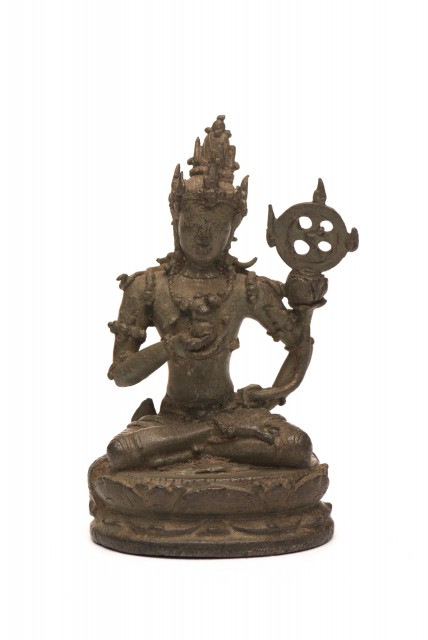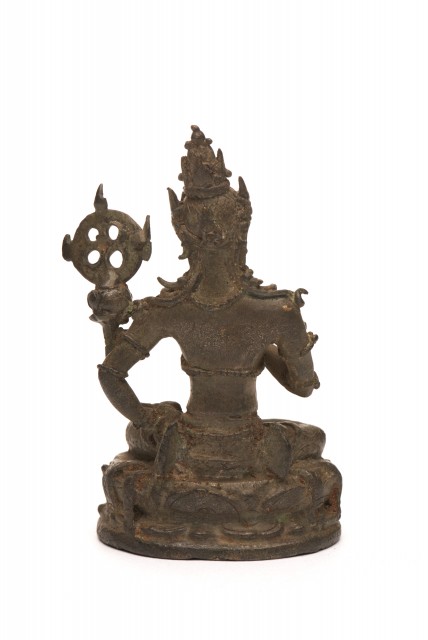
One of Four Vajra-Deities

Synthescape, Digital image © Asia Society

Synthescape, Digital image © Asia Society
One of Four Vajra-Deities
Late 10th-early 11th century
Indonesia, East Java, Nganjuk, Chandi Reja
Copper alloy
H. 3 1/4 x W. 2 x D. 1 1/2 in. (8.3 x 5.1 x 3.8 cm)
Asia Society, New York: Mr. and Mrs. John D. Rockefeller 3rd Collection, 1979.87.3
Licensing inquiries
These four deities from a large set of small bronze sculptures discovered in 1913 in the village of Chandi Reja in East Java illustrate the importance of Vajrayana (Esoteric) Buddhism in Java. The figures were once part of a larger set of perhaps as many as ninety sculptures that formed a three-dimensional mandala, or cosmic diagram. Scholars generally agree that these sculptures were part of a Diamond Realm (Vajradhatu) mandala. In Vajrayana Buddhist thought, mastery of both the Diamond Realm, which symbolizes wisdom, and the Womb Realm (Garbhadhatu), which symbolizes practice, is necessary in order to achieve enlightenment. The small size of these figures suggests that they were placed in the outer rings of the mandala, where they functioned as attendants for the more important deities in the inner part. The crowns and jewelry are different for each deity as are the objects they hold in their hands.


